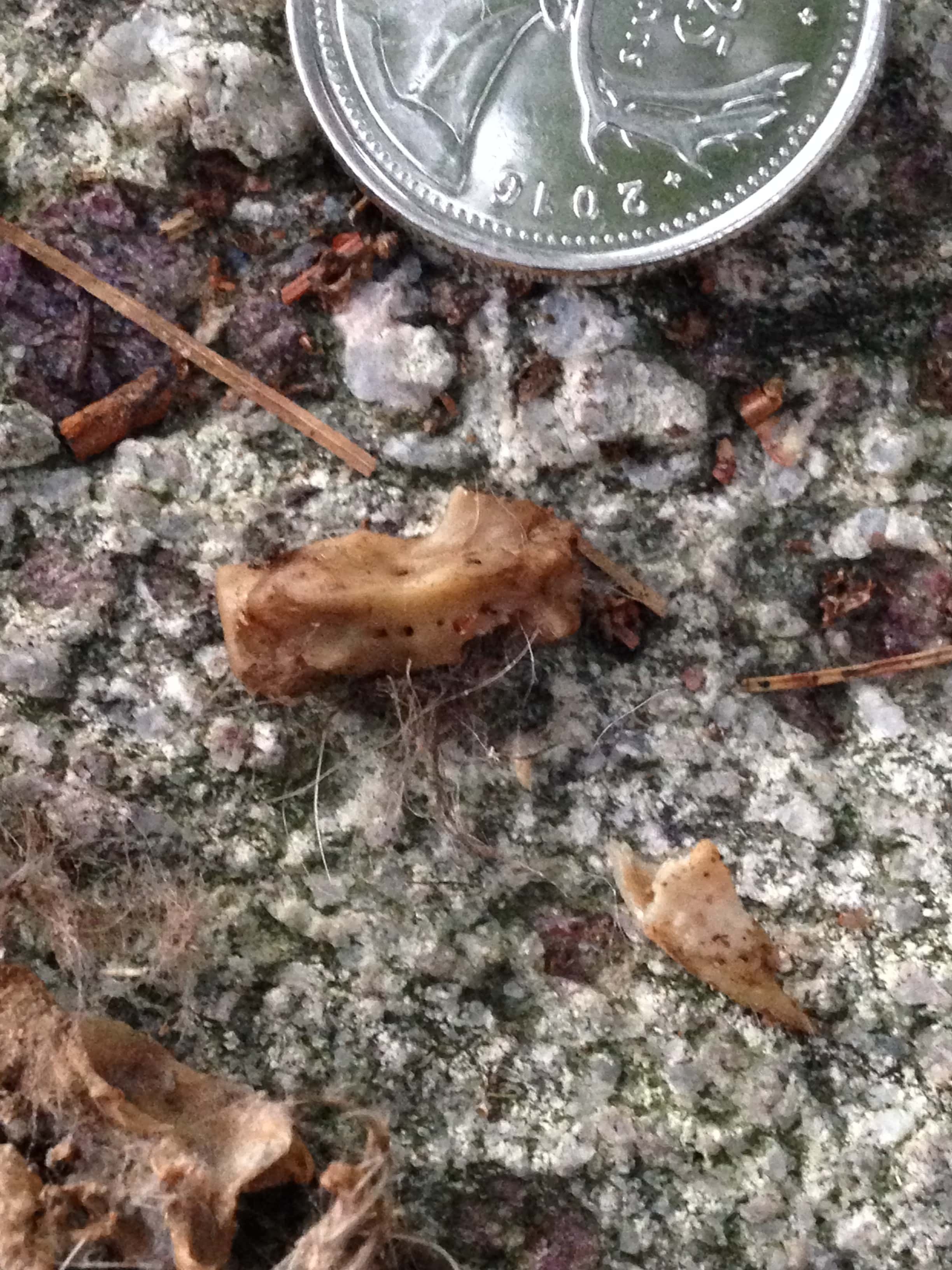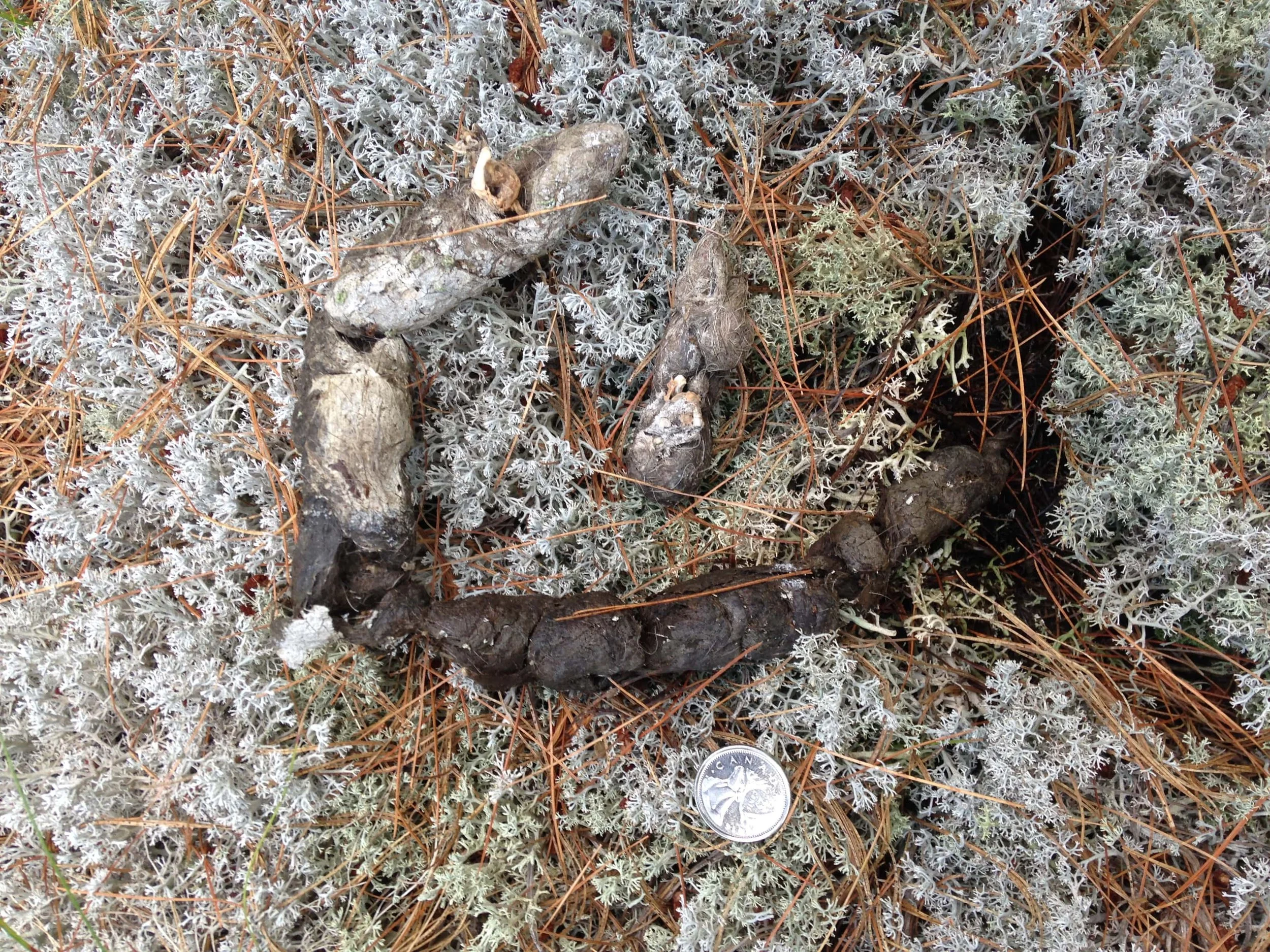Some scat from Point Grondine
This year we went back to Point Grondine from Tuesday August 2 until Saturday August 6th. These were the exact dates that we were there last year, and we stayed at the same site, C2, which we had stayed at before. We had originally planned on staying at a variety of different sites but the booking got skewed somewhere along the way and we rebooked last minute and just chose to have our basecamp be a spot which we were in the midst of getting to know already.
View from our camp at Point Grondine
We spent most our time up there doing as we did last year - sleeping (lots of naps), eating (dehydrated chili my partner had made), reading (Watership Down by Richard Adams), floating (we would just get in the canoe and forgo paddling and just drift) and botanizing (as we came across plants we did not know or wanted to know more, we’d pull out the field guides and cameras to study and photograph).
The plants we encountered were beautiful and lovely as always, and most we do not see down here in Thadinadonnih/Guelph so that is always a treat as well, but really after last year’s encounter with a Bobcat (Lynx rufus) I was secretly longing for more signs of animals and perhaps a couple good animal sightings, especially a River Otter (Lontra canadensis).
During one of our daily drifts down the Mahzenazing River where we would occasionally have to paddle a little to be sure we didn’t hit an island and wreck out friends canoe, we decided we should stop on one of the islands so we could have lunch and investigate some of the plants a little better. While out of the canoe getting a better look at some Harebell (Campanula rotundifolia) flowers I noticed some scat atop a bed of Star-tipped Reindeer Lichen (Cladonia stellaris) and White Pine (Pinus strobus) needles.
It was exciting to find such a large specimen. I ended up taking lots of photos (most of which didn’t turn out well), and then bringing most of the scat back to the canoe so I could break it apart and see what the animal had been eating. Later when we got back to our camp and before I broke it apart I measured the length and even though I was missing a piece which I left behind (the grey washed out piece in the middle) it still measured ~33cm long and a diameter of 2.6cm. My thought was likely Eastern Wolf (Canis lycaon) as it was one of the longest scats I had encountered and in territory that would fit for an Eastern Wolf. I wasn’t 100% though as Eastern Coyotes (Canis latrans) also hang out in the area. So, I went to the books for confirmation. In Mark Elbroch’s Mammal Tracks and Sign (2nd edition) the measurements he includes for Eastern Wolf scat are 15.2 - 43.2 cm L x 1.3 - 3.8 cm D, and for Eastern Coyote, 1.5 - 4.5 cm D, and no length. Does that mean Coyotes can be longer? Shorter? So variable they don’t get a number? I checked Dorcas Millers new book Scat Finder to see what her numbers show and she cites a diameter of 2.5 - 4 cm and length of 22 - 36 cm for Wolves, and for Coyote 1.8 - 2.3 cm D x 18.7 - 27 cm L which also seemed to confirm Eastern Wolf. With the numbers in mind I also posted to inaturalist to see what their automatic suggestion would be. Recognizing that this process sometimes comes up with the wrong i.d. I tried it just to see what would come up, and Eastern Wolf was suggested. So going with my own observations, the environment, the placement location, with the numbers and i.d. from inaturalist, I am rolling with Eastern Wolf.
When we broke apart the scat when we got back to our camp it was late so I couldn’t get a clear read on the colour of the hair present nor the bones which were inside. The next morning though I got up and went over to the rock where all the scat was laid out and checked it over once more. The hairs were short, pale grey and brown, didn’t really kink like a White-tailed Deer’s (Odocoileus virginianus) hair does, but instead reminded me of a Snowshoe Hare’s (Lepus americanus) Summer pelage.



There were also a couple of small bone fragments found within the scat which I could not identify, but something I did find, which I am wondering about still is a small piece of what I believe to be a claw. This encourages my thinking that these could be digested remains of a Snowshoe Hare which would be consumed by Eastern Wolves.
It’s a tricky thing to get this i.d. down. Eastern Wolves, sometimes known in Ontario as Algonquin Wolves, have a shaky taxonomical standing as a species. Sometimes they are considered a subspecies of Gray Wolves (Canis lupus), sometimes a subspecies of Red Wolves (Canis rufus) or sometimes a species on their own, Canis lycaon. There are also two different ecotypes (same species, but two forms which have evolved to have specific characteristics informed by their local environments), a larger Great Lakes Region form and a smaller Algonquin form. Both forms of the Eastern Wolf can hybridize with Grey Wolves and Eastern Coyotes so again there are possible overlaps or confusions which can arise from trying to pin down a solid i.d. on the scat.
The map above is from a study by John Benson and Brent Patterson looking at hybridization of Eastern Wolves, Coyotes and Gray Wolves in Central Ontario (APP being Algonquin Provincial Park, KH Kawartha Highlands, and WMU being two wildlife management units as described by the Ontario Ministry of Natural Resources and Forestry). These multicoloured dots show where the different hybrids are distributed across Central Ontario within study area parameters. Point Grondine is not on this map, but is closest to the WMU 47, where there is a lot of mixing between all three Canis species! This makes it even more uncertain as to who I should declare left this scat.
My partner and I had a conversation around this research, my own and Benson et all, and we got to wondering at the purpose of it all? Why invest so much time and so many resources in trapping, tracking, mapping and documenting all of these potential species overlaps? Why do it in such a western colonial methodolgy when perhaps indigenous methodologies could answer similar questions? Why do we even need to define species to such extent? Can we practice observations of individual characteristics and behaviours to determine preferences which may reflect a genetic trait? I am in favour of rigorous science, with detailed analysis and lab work, maybe even a little in the way of genetics, but sometimes wonder if our culture approaches relationships with the land in ways that replicate and perpetuate a lot of the issues (human domination over wilder landscapes, misuse of public resources, the context of “One Right Scientific Way”, etc.) which the science claims to dismantle? I am really uneducated about it all but have feelings and thoughts which are totally subjective and swayed by what feels right from my cumulative experiences rather than a conventional scientific training. Maybe if I understood the motivations more of those doing this research I would feel more inclined to it? Again I am not against it, more so just curious, cautious, and considerate of other ways of knowing… which I guess is a scientific approach, too.
Maybe, after all the research, it doesn’t matter who left the scat. Maybe the exciting and wonderful thing about this scat is that it has created a mystery, and opened hole in my knowledge, creating a chance for me to research these three Canis species more thoroughly, to create the space for conversation around conventional modern research methodologies and practice. Maybe that’s the real shit of it in the end.
To learn more :
Natural History of Canadian Mammals by Donna Naughton, University of Toronto Press, 2012.
Hybridization Dynamics between Wolves and Coyotes in Central Ontario with John F. Benson, PhD



